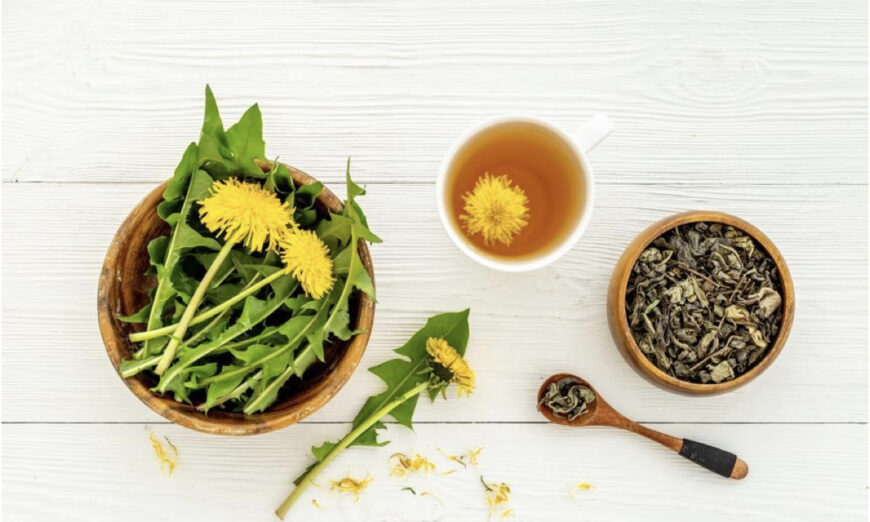It is spring again and once more we try to make this wild plant do something for us. It remains a tough one that truly needs domestication of some sort.
Practically, we have been trying for ten thousand years and gone nowhere.
fine chopped it is a spice for greens perhaps. still few takers. The tea sort of works, but then that is it. Yarrow tea is more attractive. Yet the commonality tells us that there must be a path forward. The future of our dandelion will likely be through genetic engineering.
Dandelion Possesses All Attributes as Medicine and Food, a Popular Ingredient for Springtime Liver Protection
FEATUREDFOOD & NUTRITION
Apr 21 2023
https://www.theepochtimes.com/health/dandelion-possesses-all-attributes-as-medicine-and-food-a-popular-ingredient-for-springtime-liver-protection_5202204.html?
Of the many flowers reborn in spring, dandelions—with their shining telltale yellow blossoms—may be the most underappreciated as they pop up in hillsides and yards. Apart from being a pretty sight, dandelions have been used for centuries as a medicinal herb.
This common plant has an uncommon variety of therapeutic effects, such as being diuretic and anti-inflammatory. In traditional medicine, it was used for clearing the liver and eyes, and it can also be enjoyed as a food, prepared in a variety of ways, with every part of the plant being edible.
Liu Chun, a doctor of medicine at the University of Tokyo, said that in spring, we should pay attention to nourishing and protecting the liver, and dandelion is one of the best ingredients to use.
Dandelion’s medicinal attributes come from its roots, leaves, and flowers. It contains a variety of nutrients, including vitamins A, C, and K, and minerals such as calcium, magnesium, phosphorus, and potassium.
Traditional Chinese medicine (TCM) uses dandelion to nourish the liver (promoting bile secretion), thereby making use of its diuretic and anti-inflammatory characteristics. Dandelion was also used for its anti-rheumatic effects, a finding supported by research into its kynurenic acid content. This metabolite of kynurenine possesses anti-oxidative, anti-inflammatory, and pain-relieving properties, according to a 2013 study.
In 2010, a study published in the Internal Journal of Molecular Sciences mentioned that in folk medicine, dandelion was used to treat liver disease, inflammation, and various women’s diseases such as breast and uterine cancers.
Information from Industry
The study found that rabbits fed a high-cholesterol diet along with the roots and leaves of dandelion were less affected by the unhealthy food than rabbits that weren’t treated with dandelion.
“Our results show that treatment with dandelion root and leaf positively changed plasma antioxidant enzyme activities and lipid profiles in cholesterol-fed rabbits,” the authors wrote. This change can help reduce the risk of high cholesterol atherosclerosis and coronary arterial diseases.
Dandelion Helps Nourish the Liver in Spring
TCM follows the theory of the five elements of “wood, fire, earth, metal, and water.”
The five elements can also be described as five phases. They describe different characteristics and properties of the material world. For example, wood, with its cumulative and expansive pattern of absorbing nutrients and sunshine and growing roots and branches, describes a particular biochemical process and properties. Fire, with its heat and transformative consumptive qualities, also describes a particular biochemical process.
In Chinese medicine, the five elements theory is used to describe the growth and activity of the body and processes such as digestion. Digestion is a fire-based process, an idea that sounds foreign and mystical but has been validated by modern science for more than a century. Food’s caloric content was originally calculated by dehydrating food and then burning it to measure the heat produced. In other words, actually burning food is an accurate way to measure the energy the body would obtain from it through digestion.
These five elements or five phases have numerous interactions. For example, if we drink too much water with our meal, we will dilute our digestive juices and inhibit the fire of digestion. Some elements support each other, and others inhibit each other.
In Chinese medicine, the five elements are also related to five key internal organs—liver, heart, spleen, lungs, and kidneys—which are in turn described in terms of their yin and yang characteristics.
Yin and yang is a core concept in traditional Chinese culture that refers to the interdependent duality inherent in all creation, from male and female to hot and cold. The concept of yin and yang describes the essential interplay of positive and negative charges in an atom or the pairing of releasing and inhibiting hormones that stimulate or suppress certain activities in the body. The material world and physical body are created through a constant interaction of these opposite but complementary natures.
And because the human body doesn’t exist in isolation from the physical world, Chinese medicine also factors in how different seasons affect the human body. In Western science, we know that heat and cold lead the body to produce different proteins to adjust. Chinese medicine accounts for such phenomena in its broader understanding of how the seasons affect our organs.
During the expansive energy of spring, “wood” is the dominant element of the five. The liver is characterized as a primarily wood-quality organ. This means spring has an important synergy with the liver.
Liu said spring is full of life and vitality, and the blood within the whole body relies on the liver’s detoxification and protein synthesis function to maintain vitality. The synergy between spring and the liver can increase the activity of the liver. When the vital energy (qi) of the liver is too strong, the liver tends to become hyperactive, and symptoms such as dizziness, light-headedness, and tinnitus can occur. Qi is the energy the body obtains through breathing and eating. It’s also linked to the metabolic activities or functions of specific organs.
People suffering from chronic liver disease might see the severity increase in spring, as the liver becomes more active. It’s worth paying extra attention to the nourishment of the liver at this time.
Spring is the best season to nourish the liver. When the liver is clean, the intestines are relaxed, and you can better ensure your health in the year ahead.
The middle-aged and elderly are particularly prone in spring to irritability and symptoms such as vivid dreaming or insomnia, dry mouth, and tongue discomfort. These are all manifestations of liver hyperactivity (excessive liver qi). When excessive liver qi isn’t cleared, it will also affect the health of the cardiovascular and cerebrovascular systems.
TCM refers to meridians, channels of human energy responsible for transporting qi and blood around the whole body to maintain all physiological activities.
There are 12 main meridians in the human body corresponding to the 12 internal organs. Meridians connect all the organs, limbs, five sense organs, and more.
Liu said that in TCM theory, dandelion is linked to the liver and stomach meridian and is highly regarded for nourishing the liver. (Annanel/Shutterstock)
(Annanel/Shutterstock)
 (Annanel/Shutterstock)
(Annanel/Shutterstock)Dandelion’s Medicinal Efficacy
Japanese pharmacist and TCM practitioner Akiko Nakagaki wrote that dandelion has the following benefits.
Clears the liver and eyes: Dandelion is beneficial in detoxifying the liver and can be used to treat pain caused by the eyes’ blood congestion, swelling, and acute conjunctivitis caused by liver problems.
Clears heat and detoxification: Using dandelion alone or combined with other medicinal herbs with detoxifying effects can treat symptoms such as lumps, fever, and swelling in the early stages of mastitis.
Treatment of skin purulence: Dandelion has antibacterial effects and can be used to treat skin diseases such as acne and atopic dermatitis.
Diuretic: Dandelion has a diuretic effect and can be combined with other Chinese medicinal herbs to treat urination difficulty and pain from urinary tract infections.
Cautions
Nakagaki said that dandelion belongs to the heat-clearing and detoxifying classification of drugs and will cool down the body. Therefore, people who suffer from chills shouldn’t use dandelion alone. Because different people have different physiques, it’s recommended to consult your doctor or TCM experts before using dandelion.
Dandelion Dietary Use
Every part of the dandelion is edible. Its leaves are bitter but can be steamed, and its flowers make a bright addition to a salad.
Roasted dandelion roots taste like coffee and can be used as a coffee substitute. Because dandelion leaves are quite bitter, it’s good to combine them with other vegetables in salads. Dandelion flowers can also be added to tea.
Dandelions have deep tap roots and absorb plenty of nutrients, but be careful not to harvest dandelions from places sprayed with chemical herbicides, pesticides, or fertilizers.




No comments:
Post a Comment